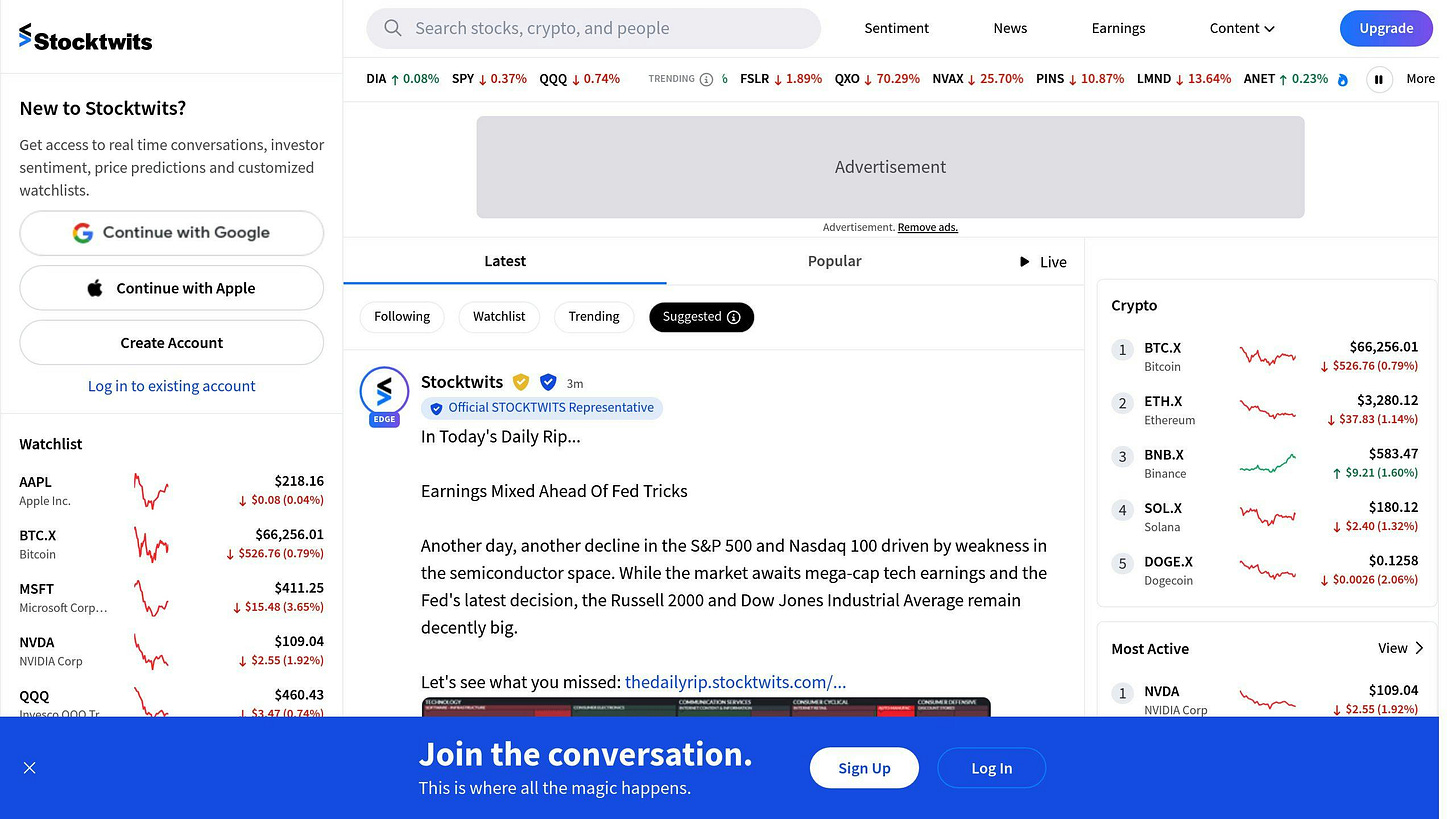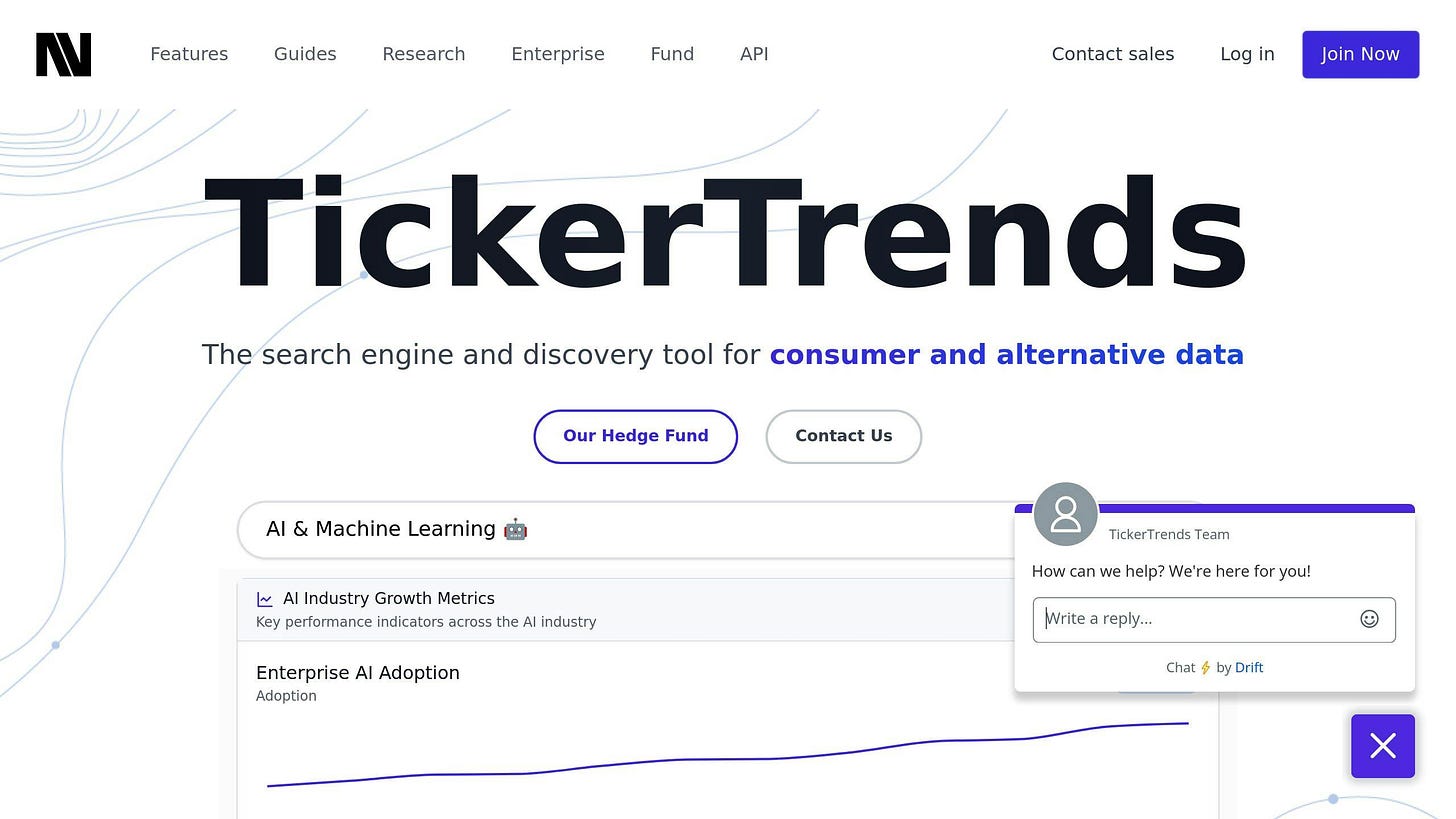Social Media Hashtags and Stock Market Trends
Social media hashtags can predict stock market trends by analyzing sentiment and activity. Platforms like Twitter, StockTwits, and TickerTrends provide tools for tracking market sentiment:
Twitter: Tracks broad sentiment via hashtags but has high noise and limited predictive accuracy.
StockTwits: Focused on financial discussions with structured sentiment analysis (bullish/bearish tags).
TickerTrends: Aggregates data from multiple platforms, offering detailed metrics like Social Arbitrage and Investor Saturation Scores.
Quick Comparison
Platform
Strengths
Weaknesses
Cost
Large user base, real-time insights
High noise, short-term focus
Free
StockTwits
Financial focus, clear sentiment tracking
Smaller audience, risk of manipulation
Free
TickerTrends
Aggregated insights, detailed metrics
Complex data interpretation
$19/month
To maximize insights, combine these tools with traditional analysis for a balanced investment strategy.
How Social Media Moves the Stock Market
1. Twitter
Twitter stands out as a go-to platform for tracking market chatter, offering a public forum where real-time discussions can provide insights into investment signals.
Hashtag Trends and Insights
Twitter's dynamic environment allows for real-time sentiment tracking through hashtags. For example, during major events like earnings announcements, spikes in hashtag activity often hint at upcoming price changes. A case in point: discussions around #TSLA jumped by 300% just before its 2024 Q2 rally[1].
Predicting Market Sentiment
Analyzing sentiment on Twitter has shown clear links to stock price movements. Research highlights that positive sentiment often aligns with a 1.35% uptick in stock prices, while negative sentiment correlates with a 1.56% drop[3]. A memorable instance is the GameStop surge in 2021, where #GME mentions skyrocketed 850% within 24 hours of its price peak[6].
However, Twitter's predictive power has its limits. A study on the Nairobi Stock Exchange found only a 52% correlation between sentiment on Twitter and actual price changes[5]. This highlights the importance of using other data sources alongside Twitter. Platforms like StockTwits, which we’ll discuss next, offer a more focused lens on trader sentiment.
Effects on Retail Investors
In 2024, finance-related tweets saw a 214% year-over-year increase[4], reflecting growing interest among retail investors. But there are challenges:
Real-time data can prompt quick reactions but may lead to impulsive decisions.
While Twitter offers broad sentiment visibility, it also comes with a high noise-to-signal ratio.
To make the most of Twitter insights, pairing sentiment data with technical indicators is essential.
2. StockTwits
StockTwits is a platform dedicated to financial discussions and market sentiment, setting it apart from broader social media networks. With tools designed specifically for tracking stock-related conversations and sentiment, it addresses the challenge of separating useful insights from irrelevant chatter, a common issue on platforms like Twitter.
Hashtag Popularity and Sentiment Tracking
StockTwits uses cashtags and organizes discussions into bullish or bearish categories, making it easier to spot trends. This structured system minimizes irrelevant content compared to general platforms.
For example, Etsy's stock saw a 27% rise in just one week, which was accompanied by a strong bullish sentiment ratio, as tracked by StockTwits [2].
Predicting Market Sentiment
StockTwits builds on the idea of sentiment analysis by offering detailed categorization of market sentiment. This data can reveal potential price reversals based on specific patterns:
Sentiment Pattern
Price Movement
Rising Sentiment
Rising Price
Rising Sentiment
Falling Price
Falling Sentiment
Rising Price
Falling Sentiment
Falling Price
Real-world examples include Eagle Pharmaceuticals' 28% drop despite 18% bullish sentiment, Wayfair's 36% rally during bearish sentiment, and NII Holdings' 31% drop with 31% bearish sentiment [2].
Insights for Retail Investors
StockTwits offers valuable tools for understanding market sentiment but comes with limitations, similar to those seen with Twitter data. For instance, Wayfair's 36% rally, despite widespread bearish sentiment [2], underscores that sentiment data should be just one part of a broader investment strategy.
The platform's structured sentiment analysis can provide helpful insights, but it works best when combined with other research methods.
3. TickerTrends
Hashtag Popularity Analysis
TickerTrends takes the wide reach of Twitter and the focused insights of StockTwits to the next level by pulling data from multiple platforms. Unlike StockTwits, which sticks to structured analysis, TickerTrends casts a broader net, combining hashtag trends with web traffic and app usage data. This gives users a fuller view of market sentiment by connecting dots across various sources rather than relying on just one platform.
Market Sentiment Prediction
With its advanced algorithms, TickerTrends digs into sentiment data from a range of sources to offer a detailed look at market trends. It uses three main metrics:
Social Arbitrage Score: Tracks how sentiment differs across social media, news outlets, and forums.
Investor Saturation Score: Monitors crowd behavior by analyzing search volume, app activity, and web traffic.
Real-Time Sentiment Index: Keeps tabs on the current market mood using multiple alternative data sources.
These metrics help overcome the blind spots that come with focusing solely on platforms like Twitter or StockTwits.
Impact on Retail Investors
By pulling insights from multiple sources, TickerTrends opens up new possibilities for retail investors. For $19/month, individual traders can access tools that were once out of reach, leveling the playing field for sophisticated sentiment analysis.
The platform suggests pairing these alternative data insights with traditional financial analysis for a stronger investment strategy. This method helps retail investors tackle common issues in social media analysis by:
Spotting manipulated trends
Linking signals across platforms
Making better decisions with in-depth sentiment insights
Pros and Cons
Investors have a variety of platforms to choose from, each offering its own strengths and weaknesses:
Platform
Pros
Cons
• Large user base offering instant market insights
• Access to real-time data
• Broad reach for sentiment analysis
• High noise-to-signal ratio
• Short-term focus can overshadow long-term trends
• Challenging to filter out irrelevant information
StockTwits
• Dedicated to financial discussions
• Sentiment indicators like bullish/bearish tags
• Proven correlation with price movements
• Clear categorization system (RR, RF, FR, FF)
• Smaller audience compared to Twitter
• Risk of sentiment manipulation
• Narrower analytical scope
TickerTrends
• Aggregates data from multiple sources
• Synthesizes cross-platform information
• Offers detailed sentiment metrics
• Affordable subscription ($19/month)
• Requires familiarity with various metrics
• Complex data interpretation
• Newer platform with less established reputation
These platforms highlight the need for tailored strategies when analyzing social media data. While no single platform provides a complete market picture, combining Twitter's broad reach, StockTwits' financial focus, and TickerTrends' aggregated insights can give investors a more well-rounded understanding.
To make the most of these tools, it's essential to recognize their limitations and consider using a mix of platforms. Select options that match your technical expertise and investment goals.
Conclusion
Social media hashtags and stock trends often show a connection, particularly with tech giants like Apple and Amazon.
Take StockTwits as an example. Stocks with rising sentiment and price movements - known as Group RR - have delivered impressive results. For instance, Etsy saw a 27% gain in just one week, paired with 22% bullish messages. On the flip side, NII Holdings faced a 31% decline during periods of increased bearish sentiment, reflected by 31% negative messages[2].
While social media platforms provide useful market insights, their value increases when paired with traditional analysis methods. Tools like TickerTrends highlight this by combining data from social media, web traffic, and consumer trends, offering a more comprehensive view.
To make the most of these insights, it’s essential to:
Combine multiple data sources for a broader perspective
Focus on the strengths of specific platforms
Apply advanced sentiment analysis techniques
Balance social media signals with traditional market analysis
As shown in the platform comparisons, the future of market analysis will likely bring better sentiment analysis and more advanced predictive tools. These innovations aim to make market predictions even more accurate.




